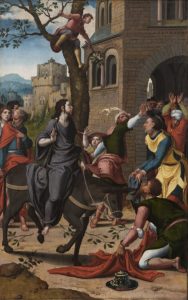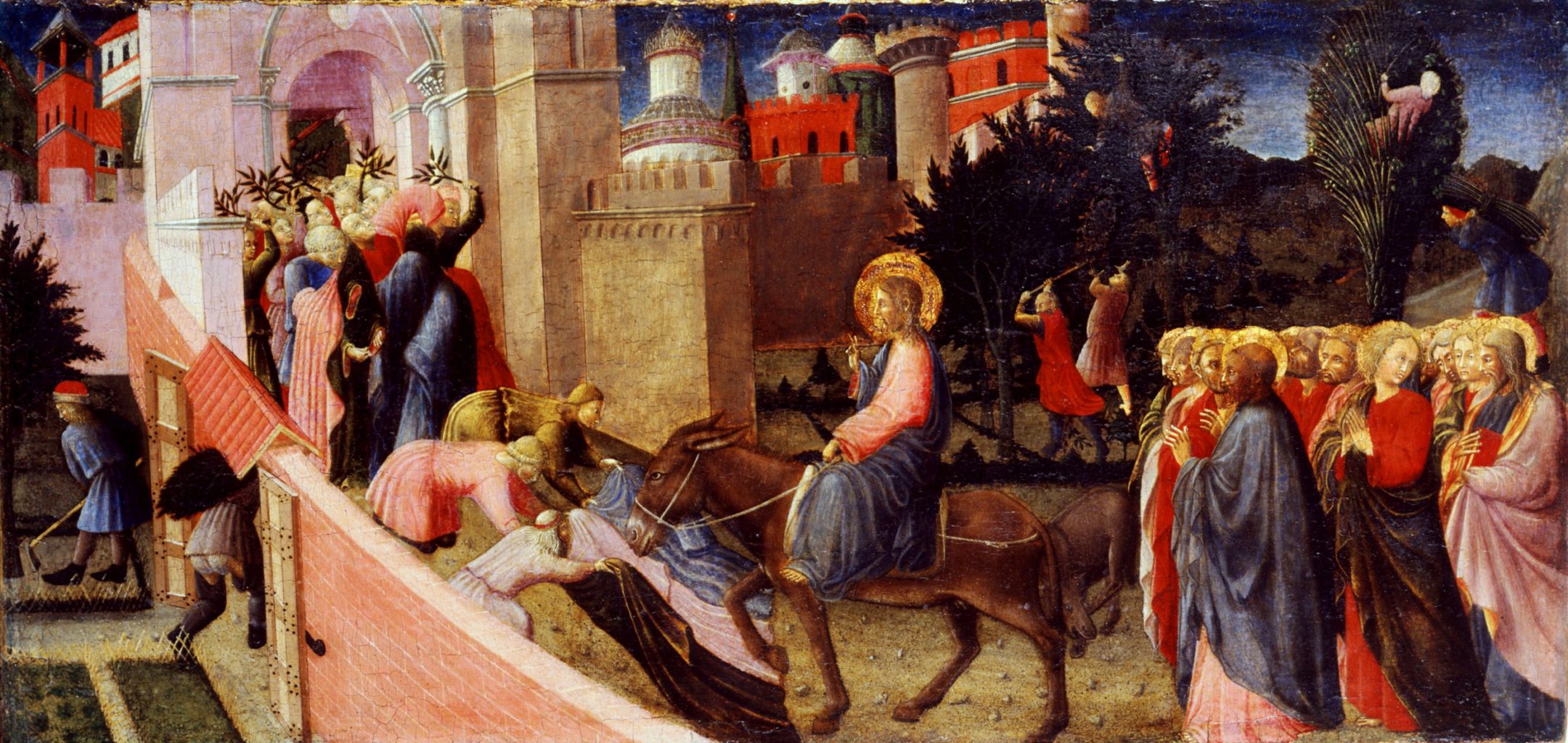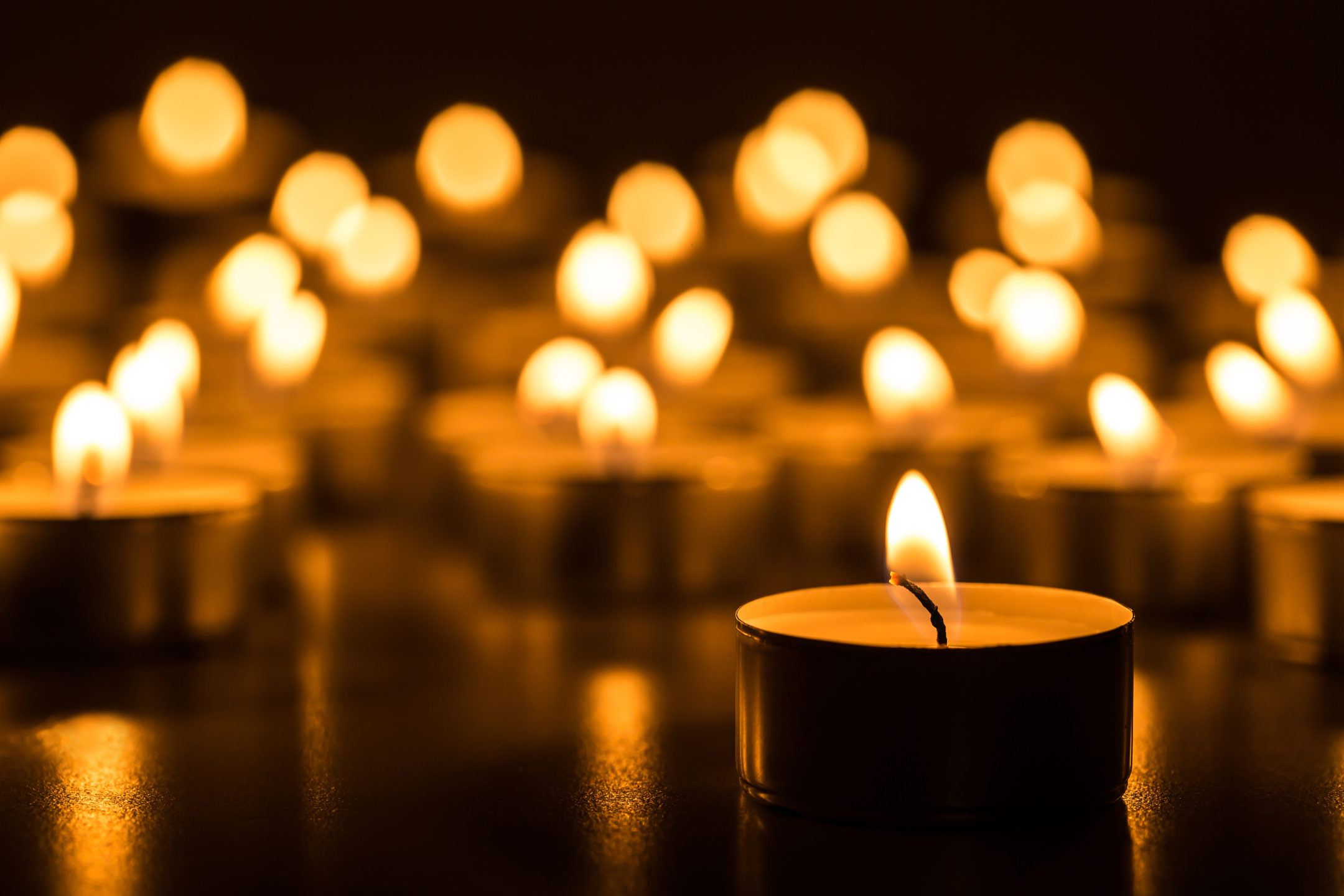 Why do people hold palms at church on Palm Sunday?
Why do people hold palms at church on Palm Sunday?
We do this to re-enact a scene in the Gospel. It’s a re-creation of Jesus’ triumphal entry into Jerusalem.
As the Lord rides in on a donkey, a “very large crowd gathers.” They “spread their cloaks on the road.” Some people “cut branches from the trees and strewed them on the road.” (See today’s Gospel from Matthew 21.)
The passage never mentions palms, and parishes in many countries will use branches from their own native trees: willow, for example, or olive.
The type of tree doesn’t matter. What matters is what the people were doing back then. They were treating Jesus like a king.
When a king came to visit a city, its people would want to make sure he felt welcome. They would go out to the roads the king would travel, and they’d fill in the potholes. They’d smooth the roadway, so his ride would be pleasant and not bumpy.
Well, the Jews in the first century were expecting a king — the Messiah, or “Anointed One” — and they had been waiting for him for centuries. According to an ancient tradition, the Messiah would be revealed during the feast of Passover.
According to the Prophet Isaiah, God’s people should prepare his way: “Every valley shall be filled and every mountain and hill shall be made low. The winding roads shall be made straight, and the rough ways made smooth” (Isaiah 40:4; Luke 3:5).
There was a great crowd in Jerusalem that day because it was Passover. Everything seemed to be lining up, and Jesus looked a lot like the Messiah they were waiting for. He performed great miracles. He healed the sick and fed the hungry. And he was a mesmerizing teacher.
So the crowd covered his path with cloaks and branches. They wanted to cushion the footfalls of his donkey. Meanwhile, they hailed him as a king, chanting: “Hosanna to the Son of David; blessed is the he who comes in the name of the Lord; hosanna in the highest.”
The problem was that the holy land already had kings — four of them, in fact. They were called “tetrarchs,” and they were heirs of King Herod the Great. But they were puppets, really. All the territory of ancient Israel was now part of the Roman Empire. The emperor, Tiberius, was the only king with real authority.
So the demonstration on Palm Sunday was unsettling for everyone in authority. It seemed to call the whole world order into question. It was a threat even to the sacred order, because the high priests held their office at the will of the secular powers.
The true meaning of the event is revealed in the very last book of the Bible. There, in a vision of heaven, Jesus appears as “King of Kings, and Lord of Lords” (19:6). Before him — once again — stands “a great multitude” (Revelation 7:9). But this one includes men and women not just from Jerusalem, but from “every nation, race, people, and tongue.” And they’re all “holding palm branches in their hands.”
There is no better image of the Church — the Church whose very name, Catholic, comes from the Greek word for “universal.”
So with the Church we take our stand, symbolically on Palm Sunday, but truly every day.

